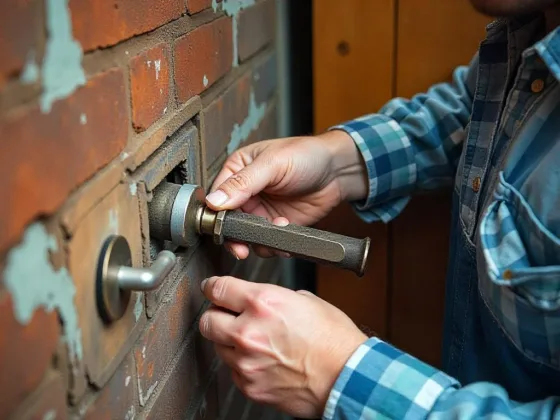Table of Contents Show
Floods can be unexpected and overwhelming, causing significant damage to property and posing serious risks to personal safety. Whether caused by natural disasters, such as heavy rainfall or hurricanes, or by issues like burst pipes, being prepared and knowing how to respond to a flood is crucial.
Dealing with flooding requires prompt action, clear thinking, and a comprehensive plan to mitigate damage and ensure safety. In this article, we’ll explore essential tips for dealing with flooding, from immediate actions to take during a flood to long-term recovery strategies.
These tips are designed to help you navigate the challenges of a flood situation effectively and to minimize the impact on your home or business. Let’s dive into these key tips:
1. Safety First
In any flood situation, your priority should always be safety. If you are advised to evacuate, do so immediately. Avoid walking or driving through floodwaters, as they can be deeper and faster moving than they appear. Be aware of hazards like downed power lines and contaminated water. If you are in a building, move to the highest level but avoid enclosed attics to prevent becoming trapped by rising floodwater.
Also, keep an emergency kit handy, including essentials like water, food, a flashlight, a first-aid kit, extra batteries, and necessary medications. Staying informed through local news and weather channels is also crucial to stay updated on the flood situation and receive instructions from local authorities.
2. Seek Professional Help
For extensive damage, consider hiring Commercial Restoration Services, like those offered by FPR Commercial. These professionals have the expertise and equipment to handle large-scale flood recovery efforts. They can help with water extraction, drying, mold remediation, and rebuilding.
Commercial restoration services can also assist with more complex issues such as structural repairs, electrical work, and restoring damaged personal property. Their experience and knowledge can be invaluable in ensuring that your property is restored safely and effectively.
3. Turn Off Utilities
If it’s safe to do so, turn off utilities at the main switches or valves. This includes electricity, gas, and water. Turning off utilities can prevent further damage and reduce the risk of electrical hazards. If you are unable to reach the main switches safely, contact your utility providers for assistance.
In the case of gas leaks or electrical issues, avoid using open flames or electrical equipment, as these can create fire hazards or cause electrocution. After the flood, have a professional inspect your utilities before turning them back on to ensure they are safe to use.
4. Protect Important Documents and Valuables
Keep important documents, such as birth certificates, passports, insurance policies, and financial records, in a waterproof container. If time allows, move valuable items to higher ground to protect them from floodwater. This can also include family heirlooms, jewelry, and electronics.
Preparing a list of valuable items and their estimated value beforehand can also be helpful for insurance purposes. Additionally, consider backing up digital data on external hard drives or cloud storage as a precaution against data loss due to flooding.
5. Document the Damage
Before you start cleaning up, take photos or videos of the damage for insurance purposes. Documenting the extent of the damage can be crucial for filing insurance claims and obtaining aid. Be thorough in your documentation, including all affected areas of your property, both inside and out. This should include structural damage, water levels, damaged furniture, and any other losses.
Keep a record of all correspondence with your insurance company and save receipts for any immediate repairs or purchases related to the flood damage. This will provide a clear record for your insurance claim and ensure you are fairly compensated.
6. Remove Water and Moisture
Once it’s safe to re-enter your property, start removing water as quickly as possible. Use pumps, wet vacuums, or buckets to remove standing water. Open windows and use fans and dehumidifiers to dry out the area. It’s important to act quickly to prevent further damage and mold growth.
If the flooding is severe, consider hiring professionals to assist with water removal and drying. Remove wet items such as carpets, furniture, and bedding from the affected area, as these can hold moisture and promote mold growth. If you have hardwood floors, try to dry them as soon as possible to prevent warping and buckling.
7. Clean and Disinfect
Floodwater can be contaminated with sewage, chemicals, and other pollutants. Clean and disinfect all affected areas thoroughly to prevent health hazards. Wear protective gear, such as gloves and masks, during the cleanup process. Use a mixture of hot water and heavy-duty cleaner for washing down walls, floors, and other surfaces. For disinfecting, use a solution of one cup of bleach per gallon of water. Be sure to ventilate the area well while cleaning.
Pay special attention to food-contact surfaces, such as countertops and pantry shelves, and discard any food or medicine that may have come into contact with floodwater. It’s also important to clean and inspect heating and cooling systems and appliances that have been flooded to ensure they are safe to use.
8. Prevent Mold Growth
Mold can develop within 24-48 hours of flooding. Remove wet materials, such as carpeting and drywall, that cannot be dried and cleaned. Use mold-resistant products when repairing and rebuilding. Keep the humidity levels in your home low, ideally between 30% and 50%, to prevent mold growth.
This can be achieved with the use of dehumidifiers and air conditioners. Regularly inspect your home for signs of mold, especially in hidden areas like behind walls or under flooring. If you discover extensive mold growth, consider hiring a professional mold remediation service to safely remove it.
9. Review and Update Insurance
After experiencing a flood, review your insurance policies to understand your coverage. Consider updating your coverage to include flood insurance if you don’t already have it, especially if you live in a flood-prone area. Make sure you understand the terms and conditions, including what is and isn’t covered.
Consider additional coverage for valuable items or specific risks associated with your area. Keep your insurance information and agent’s contact details readily accessible in case of future emergencies.
10. Prepare for Future Flooding
Take steps to reduce the risk of future flooding. This can include installing flood barriers, elevating electrical systems and appliances, and improving drainage around your property. Consider landscaping changes, such as planting rain gardens or installing rain barrels, to help manage excess water.
Regularly clean gutters and downspouts to ensure proper drainage. If you live in a high-risk area, develop an emergency plan that includes evacuation routes and a communication plan with family members.
Conclusion
Dealing with flooding can be a challenging and stressful experience, but being prepared and taking the right steps can make a significant difference in the recovery process.
Prioritize safety, act quickly to mitigate damage, and seek professional help when needed. By following these tips, you can navigate the aftermath of a flood more effectively and set the stage for a successful recovery.










